Like so many seaside towns, Essaouira has something reassuringly solid about it. This tiny little place juts out into the Atlantic like an island about to break free. In fact, people here describe it as not like Morocco at all, but rather a place dancing to its own languid rhythm: open-minded, free-spirited and curiously separate from the rest of the country.
I first rolled up in Essaouira about five years ago, looking for a quick escape from the hustle of Marrakech, a couple of hours' drive inland. Here on the coast, the only crowds are of seagulls, whipping and turning above the harbour like the kite-surfers' sails that flock further down the broad, biscuit-coloured beach. The air, straight-off-the-ocean salty, is made headier by the smoky scent of fish rubbed in charmoula - a lemony mix of paprika, cumin, garlic and coriander - grilling on hot coals at the stalls around the harbour, with its jumble of blue-tailed fishing boats. Everything is blue here, from the cobalt trim of the window shutters and doorways that dot the Medina's narrow lanes, to the turquoise petits taxis that bob around the Bab Marrakech, one of several gateways into the Medina. And over the clamour of gulls, church bells toll every day at noon, underscoring the call to prayer.

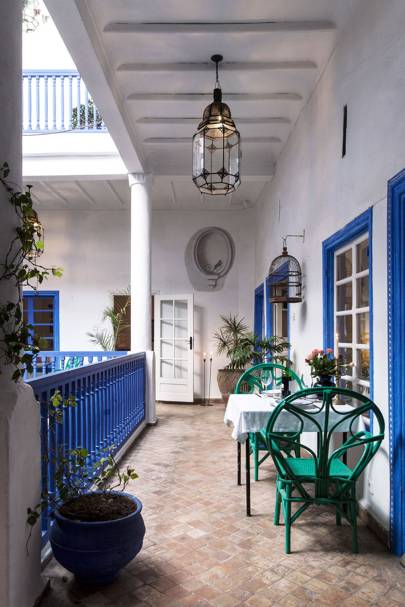
Terrace at Villa Maroc
Advertisement
Essaouira has opened its arms wide to different nationalities and religions ever since Sultan Sidi Mohamed ben Abdallah built his fortress here in the mid 18th century - the town's original name, Mogador, means 'small fort' - with the aim of opening Morocco to the rest of the world. He was successful, attracting major consuls from Britain and Europe as well as establishing what became known as the Port of Timbuktu as the country's main commercial hub.
It was in part that libertine outlook that put the town on the hippie trail in the 1960s, and there are plenty of brightly embellished tales about Jimi Hendrix and Cat Stevens chilling out here. You would think the developers would have been quick to follow, but aside from an ailing Sofitel, the international names have yet to arrive.
The old town is thriving however, with bars, galleries and smart boutiques dotted through the three distinct districts wedged within its rampart walls: the Kasbah La Scala with its tangle of narrow alleyways; the teeming souks of the Medina; and the Mellah (the Jewish quarter), considered unsafe for foreigners when I first came, but now flourishing with a lively café culture among the shady plazas.

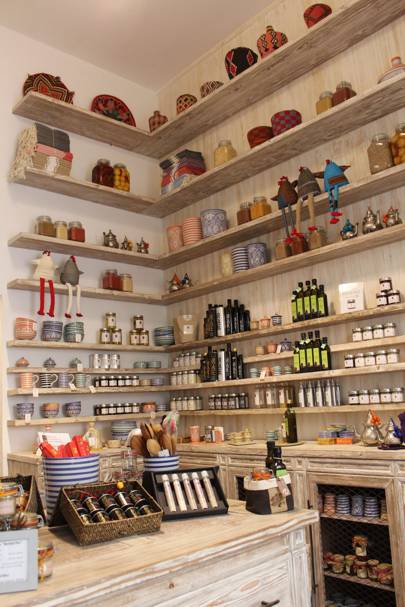
Le Coin des Saveurs
Advertisement
At the weekend, folk gather to brunch on huevos rancheros at La Cantina (66 rue Boutouil) on the Mellah's Place Taraa, or stroll down the main Rue du Rif with a latte from Bruno at Juice, who came on holiday here two years ago and never left. 'There was no work in Biarritz,' he says, 'and I thought Essaouira was a good alternative. It's so laid-back and easy.' And sitting out in the sun with a tea glass of nous-nous (half espresso, half steamed milk) from one of the cafés on the Place Marché aux Grains, I see what he means.
This is a town made for pottering, for ambling, for idling - and a morning spent poking around its many galleries is très Souiri (as the locals are known). The naïf artists of the Joutia (the Sunday flea market) were first shown at Gallery Damgaard, opened in 1988 by Danish artist Frédéric Damgaard. For a few thousand dirhams you still can pick up one of Redouane Ouarzaz's Lego-bright artworks depicting grinning cats, camels and fish, or the intricate, psychedelic imaginings of Regragui Bouslai. Slimane Drissi's La Petite Galerie (2 rue Ibn Rochd) explores love - Arabic has more than 50 different words for the emotion and his work covers the whole gamut from hot-blooded passion to the misery of loss. And there's a brilliant collection at the new Institut Français with contemporary pieces by artists such as Mohamed Tabal, who turns the naïf style on its head by rendering it in black and white.
Its libertine outlook put the town on the hippie trail in the 1960s, when Hendrix chilled out here
Essaouira's coming of age began with a trickle of newcomers that has been gaining momentum over the past few years. Among them is French artist Didier Spindler, who arrived seven years ago and owns two of the most eclectic places in town: Caravane Café, known for its killer rum punch, creative cooking and fire jugglers, and the five-room Ocean Vagabond. Owned by Sebastian and Marie Deflandre, it was the first beach bar to open on these shores in 1996, starting life as a camel-hair tent serving salads and sandwiches then gradually evolving into the casually cool hotel it is today, with striped linens piled high on wooden furniture, where I sit eating sushi with a glass of Meknes rosé and watch the camels mooch past.
Advertisement
Marie's something of a local celebrity after taking part in the all-women Rallye Aïcha des Gazelles in 2014, finishing 19th out of 160 teams. 'But it's about skill, not speed,' she explains. 'We have to cross 1,200km of desert, with no GPS, over the course of a week in the most efficient way possible.' The finish of the rally here is the big event of the year, and the 25th-anniversary event in 2015 was the biggest yet. Not that the town lacks parties. The Festival les Alizés in April draws world-class jazz and classical musicians, followed by the Gnaoua Festival in May, and heel-clacking flamenco at the Festival des Andalousies Atlantiques in October.

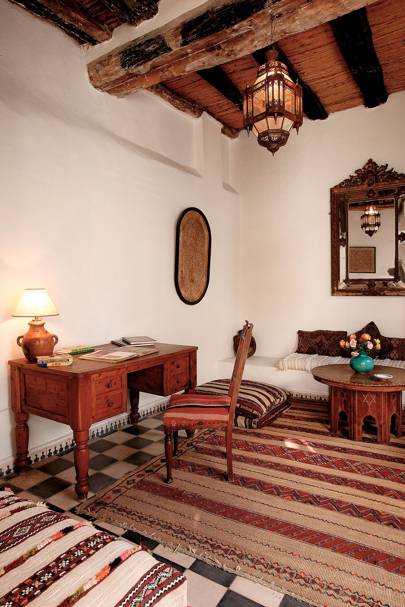
Suite at Villa Maroc
Don't bother with the big five-star hotels here: they're better in Marrakech and, besides, the smaller places better capture the town's bohemian charm. At Didier Spindler's maximalist Dar Adul (doubles from about £45), plump for the room with a giant sofa wrapped around an equally supersized fireplace. The cool Dar Maya (doubles from about £145) is all sand-coloured plaster and modern Moroccan minimalism with a hot tub on the roof; and for something more romantically rustic, Villa Maroc (doubles from about £125) is spread across two 18th-century merchants' houses, with rooms decorated with terracotta tiles and driftwood beams, tucked around several courtyards.
Back at the port, the day's catch is hawked from about 20 stands - stall no. 5 is the one locals head to for red mullet and baby squid grilled over hot coals. There's no shortage of seafood in the Medina either: hole-in-the-wall Vagues Bleues (2 rue sidi Ali Ben Abdellah) serves a fiendishly good lobster lasagne (lunchtime only); at O'Bleu Mogador (23 Rue Bouchentouf) chef Serge Peuzin riffs on classical French and Moroccan with dishes such as roast sea bass in a dried fruit and nut crust; and buzzy La Table by Madada serves briny oysters from Oualidia and Champagne inside a sleek renovation of an arched, carob-bean warehouse.

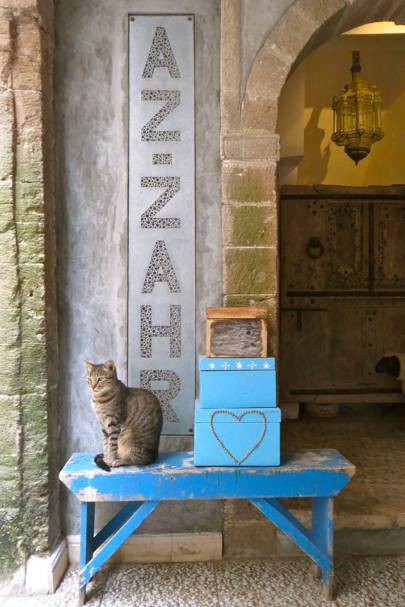
Galerie Az-Zahr
When the wind gets up, and it does, I escape to Le Jardin des Douars about 15 minutes out of town (there's a shuttle service from the Bab Marrakech). Modelled on the rammed earth citadels known as Kasbahs of the Atlas, the property is built up on a hill overlooking the Ksob River, its terraces filled with exotic shrubs and blooms; some say they are the best botanic gardens in the country. For the price of a fabulous lunch - ceviche of the day or a crab mille-feuille with preserved lemons and tomatoes - stroll among them, use one of two pools (one for adults, another for kids) and hole up in the womb-like spa.
About 10 minutes from the centre of Essaouira, in Diabat, is Auberge Tangaro (doubles from about £50). Once the hotspot among chi-chi Moroccan families and expats, it was left to fall into ruin until its new owner Younès Ottmani - who as a child spent weekends here with his parents - loved it back to life a couple of years ago. A driftwood spa and funky sunset café have been added, but the rooms are still gloriously simple and unpretentious. On a recent stay here, with the rain howling down during an Atlantic storm, I happily dozed off in front of the wood fire. Later, I feasted on kefta tagine in a cinnamon-scented tomato sauce, the vast dining room lit only by candles and firelight, and felt like a medieval queen. Joining Ottmani for a glass of wine from the nearby Vall d'Argan winery, I heard Essaouira again compared to an island. 'It's like Ibiza was 30 years ago,' he said. 'We're changing slowly, but optimistically and creatively, and I think that's right for this place.'

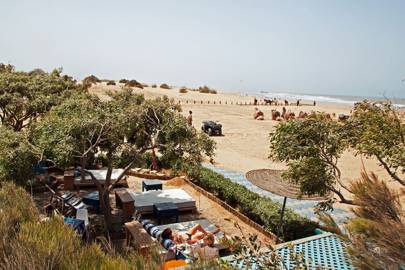
Terrace and beach at Ocean Vagabond
Advertisement
The inside track
Caroline Ruiz, the French-born co-owner of bar-restaurant One Up, spent a decade in Paris before moving to Essaouira in 2006
'When my husband and I want to relax we head for the Baoussala guest house. It's in the middle of the forest, only about 10 minutes from Essaouira, but one weekend here is like two weeks elsewhere. You can go just for lunch and a swim in the pool, but we like to stay over and use the Japanese hot tub in the garden. For a drink, the courtyard at Heure Bleue has a splendid old colonial feeling, and its bar has plenty of sofas for cosying up if it gets windy.'
This feature was first published in Condé Nast Traveller May 2015
Scroll down to see more pictures of Essaouira.
Source : https://www.cntraveller.com/gallery/what-to-do-mor...
 Somewhere for the weekend: Essaouira
Somewhere for the weekend: Essaouira